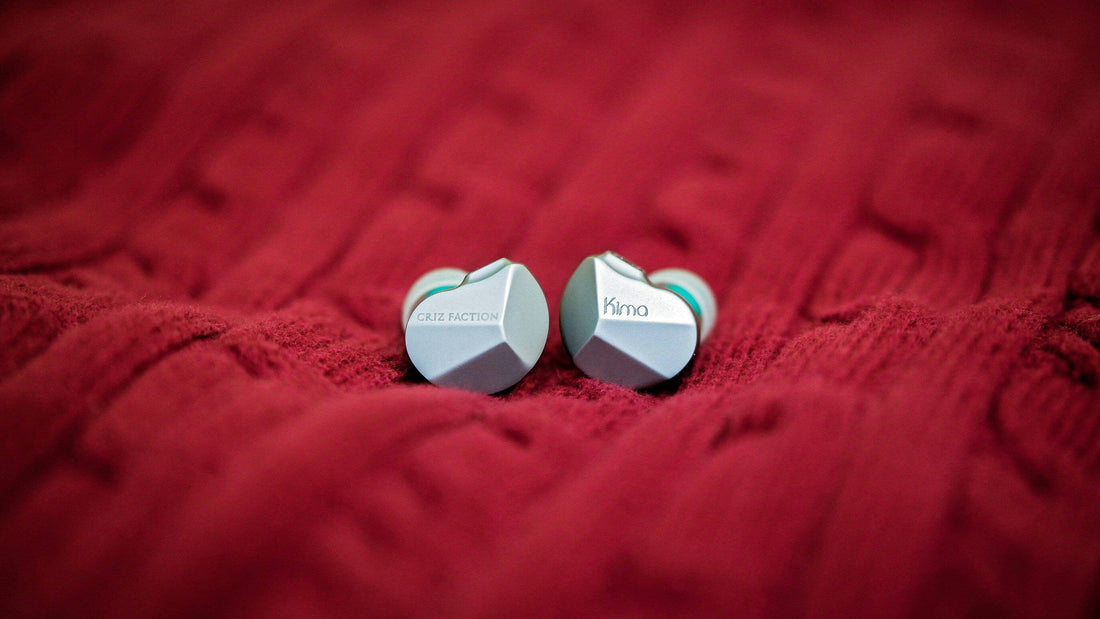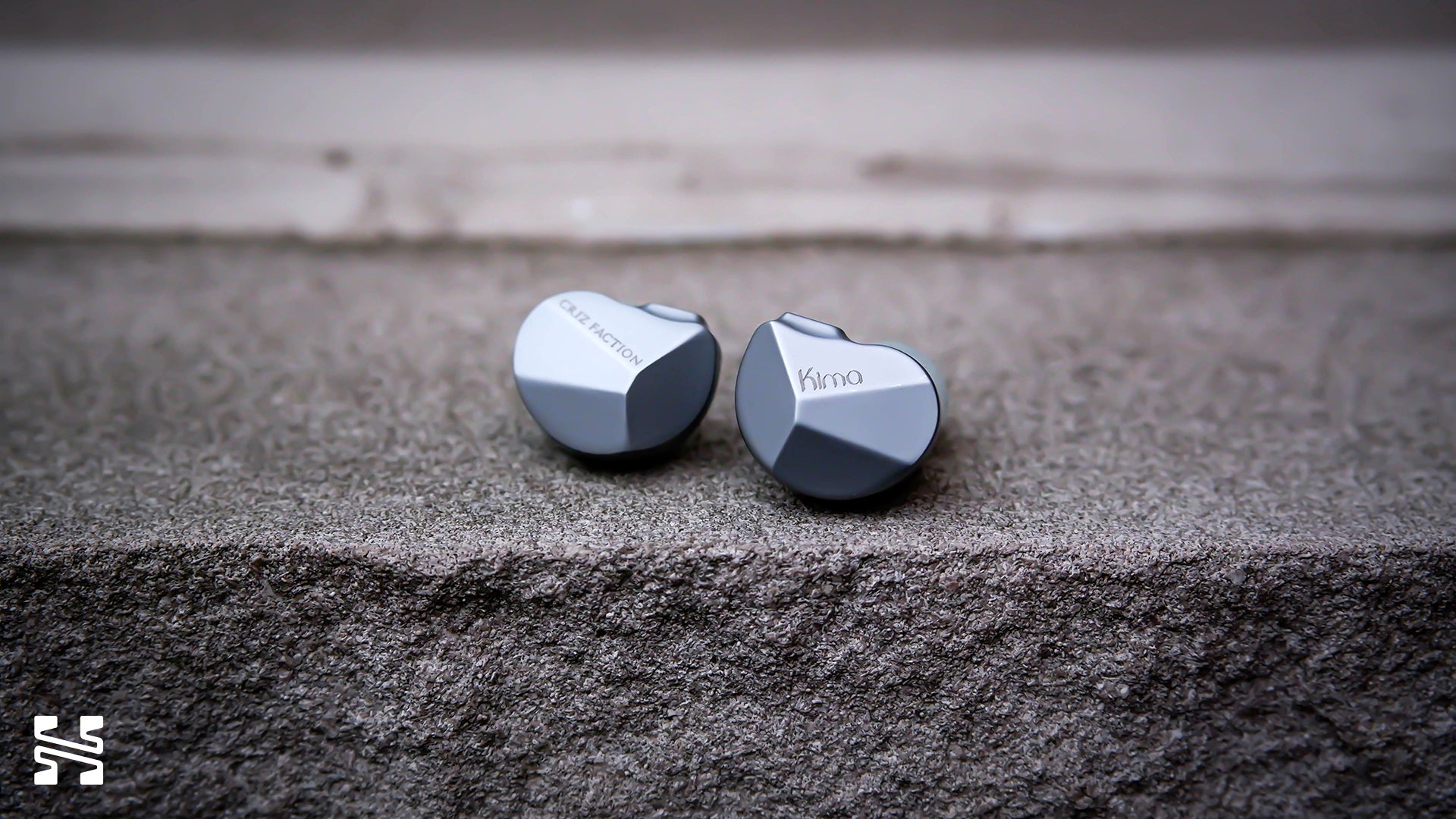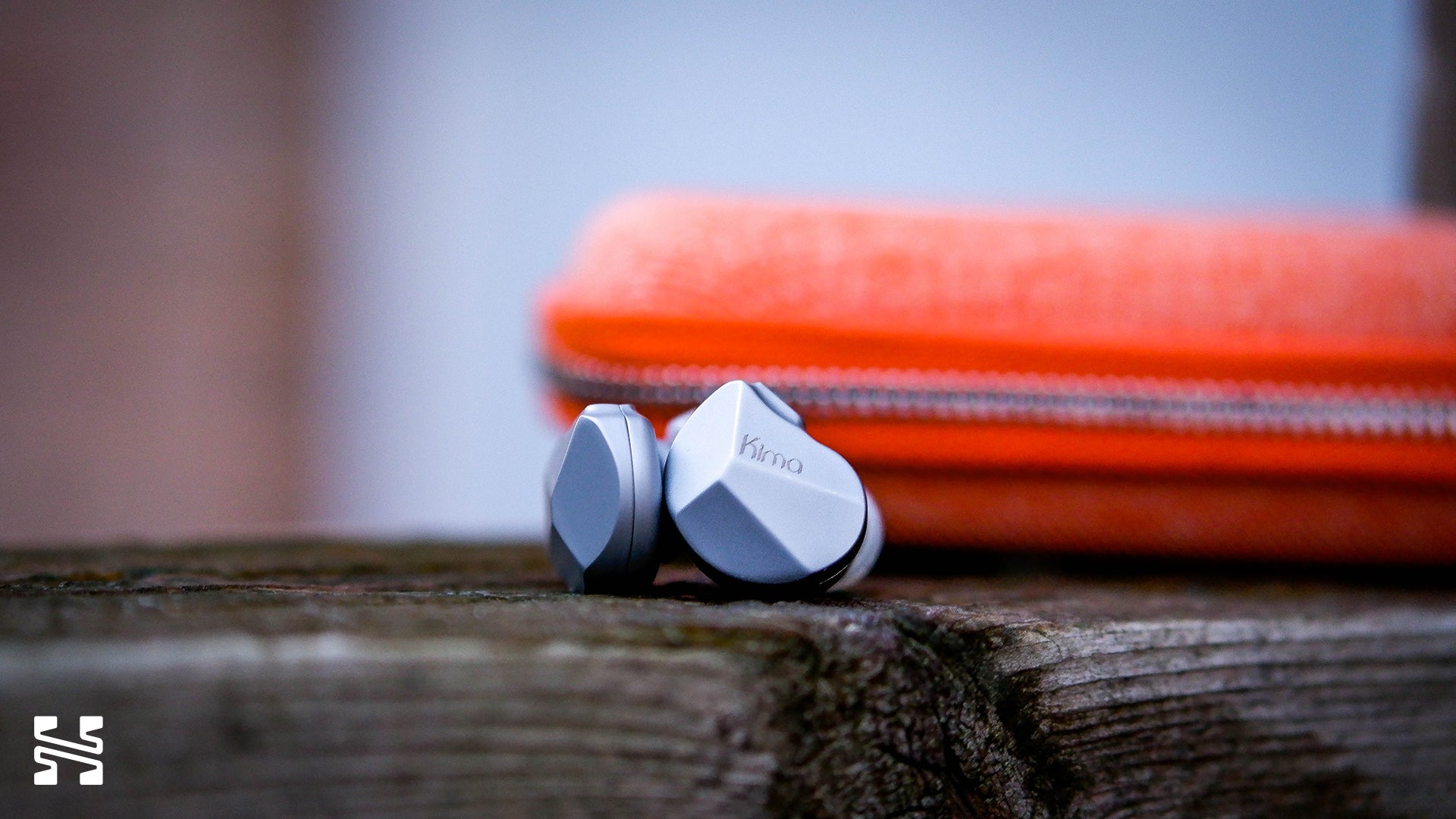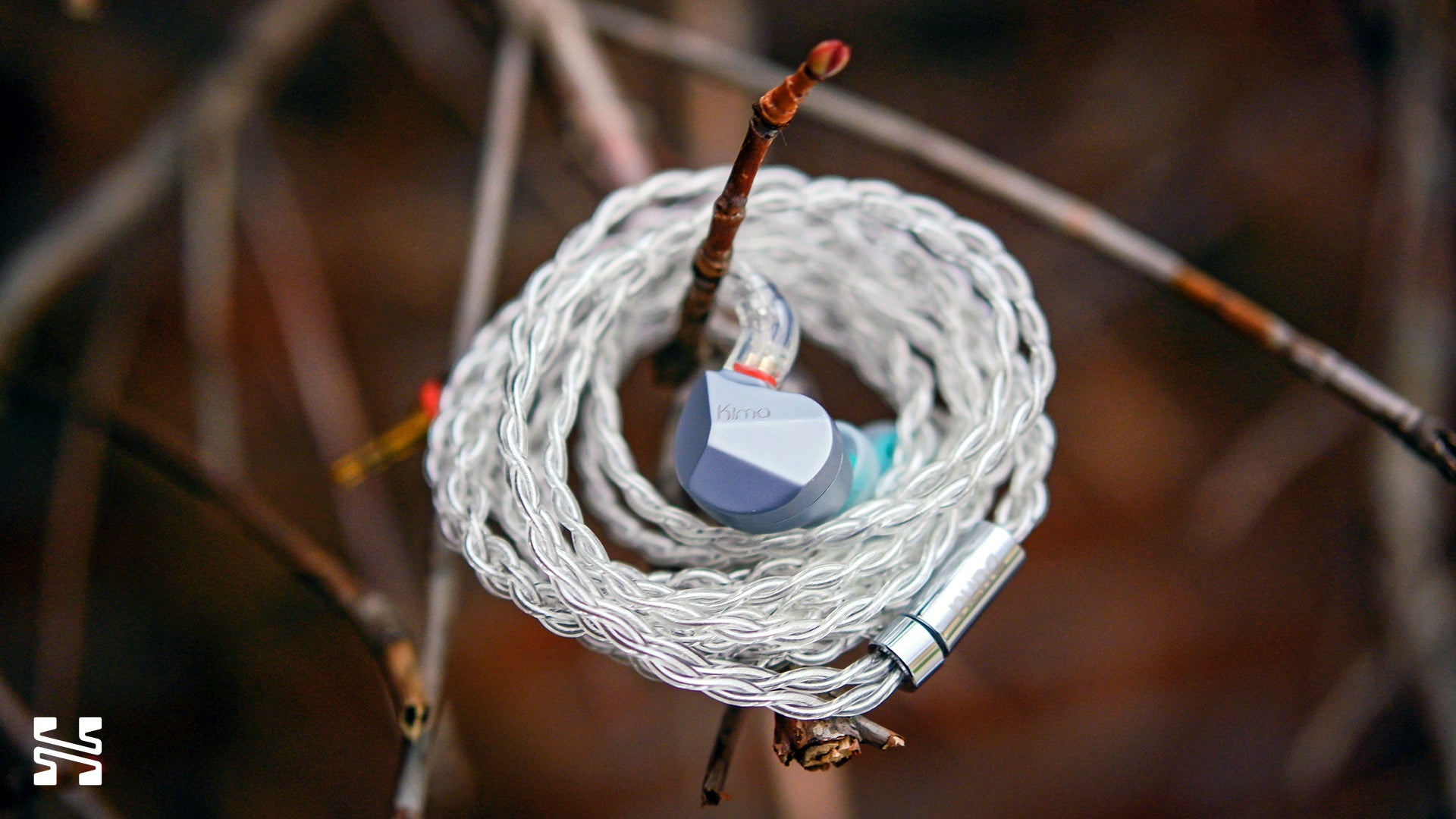DUNU Kima Review: The Arrival of the CRIZ FACTION

Introduction
From the flagship Luna with its pure Beryllium drivers to the reiterative designs of the Zen and Zen Pro, DUNU is a company that is defined by its innovation. But it is their latest product that encapsulates the depths of their creativity. Not satisfied with merely putting an anime girl on the box of the DUNU Kima, they pushed the envelope of innovation and deeply tantalizing lore to go with it. Taken directly from DUNU’s website:
KIMA began with an idea - gathering the greatest protectors from the legendary CRIZ FACTION and bringing them under one banner.
Wow. I have so many questions. Who are the CRIZ FACTION? Where are they from? What are they protecting? Why are they gathered under one banner? Are there more from the CRIZ FACTION that we can expect? Will they all be anime girls? Where are the guys? Is this the start of the DUNU cinematic universe? Are we meant to catch them all?
More importantly, how does this relate to IEMs at all? No, seriously. The DUNU Kima is ostensibly a relatively standard $100 IEM that utilizes a regular 10 mm DD. Does it warrant such an intriguing backstory? Or is it a marketing ploy dreamt up by someone desperate to claw back market share? Let’s take a closer look.
Newcomer’s Note: In the current in-ear monitor (IEM) market, the ~$50 - $100 market is dominated by a number of single dynamic driver (DD) IEMs such as the MoonDrop Aria, DUNU Titan S, and Tin HiFi T3 Plus.
Review unit sent by DUNU
What we like
- Warm, inoffensive tuning
- Excellent build quality and accessories set
- Standout imaging ability
What we don’t like
- Yet another me-too product

What’s In the Box
- Three sets of S/M/L silicon tips. Two of the sets are fairly similar generic silicon tips of varying hardness in the center nozzle. The last however is what DUNU calls their Stage & Studio (S&S) tips. It’s essentially a gray tube. I’m not a fan.
- A quarter inch adapter, a little cleaning brush, and a microfiber cloth.
- A nice orange zipper pouch.
- A silver 2-pin 4-core braided cable. It’s quite a quality cable with a bit of cable memory but little noise. It’s soft and supple and feels nice to the touch.
- The Kima itself. The shells are very nicely built and made fully of metal - a zinc alloy supposedly. The shape is ergonomic and comfortable in my ear.
Source(s): Apple USB-C dongle
Sound and Frequency Response

Frequency response of the DUNU Kima. Measurement taken with an IEC-711 clone microphone. Comparisons can only be made relative to other measurements taken by this specific microphone. A peak at about 8 – 10 kHz is likely an artifact of the measurement rig and may not exist as depicted here. Measurements above 8 kHz are not accurate. If possible, reference multiple measurements.
I won’t mince words here. The DUNU Kima is something I’ve heard many times before. Enough that I hear it even in my sleep. It’s a single DD IEM with a balanced tuning with a substantial bass hump for low-end energy, ample upper mids for vocal clarity, and a relaxed treble that adds a hint of air. We’ve seen countless variants of this exact tuning in IEMs ranging from $20 to $100 over the last year, including DUNU’s own Titan S. Now admittedly, just because the frequency response graphs are similar doesn’t mean there aren’t any differences in the sonic presentation. I find it to be a blend between the Moondrop Aria and Titan S with a couple of refinements of its own.
For reference, here is the DUNU Kima vs. the MoonDrop Aria so you can see just how closely they measure to each other.

Bass
The bass of the Kima leans punchy with an underlying boominess. What it doesn’t have is a ton of depth or rumble. That slight roll-off at the lowest octaves is more audible than what the graph might imply. Perhaps consequently, the bass punch of the Kima is a touch pillow-y. It lacks a bit of firmness to back up each note of the kick or tom. As such, it doesn’t have quite the level of impact and weight I’d really like to see, despite having the appropriate volume. This is a common trait that I’ve noticed in many of these Aria-like single DD IEMs except for the Tin HiFi T4 Plus that I recently reviewed. It’s very much like the Aria’s bass but refined just a little with the Titan S’ bass control and tightness.

Mids
The Kima’s midrange has a warm, bodied tonality courtesy of the bass shelf extending through to the 300 Hz region and early upper mids rise (pinna gain). To balance out the sound, the Kima maintains this level of upper mids energy well into the 5 kHz region. It provides vocal and instrument clarity and prevents the Kima from sounding too bogged down. On the flip side, the bodied nature of the Kima keeps it from sounding shouty. Vocals are nicely positioned - distinctly positioned independent of the other instruments, but not too forward that it steals the spotlight. Acoustic guitars and cellos in particular shine on the Kima with a lushness in the strings. Gritty, moody tones of the electric guitar are emphasized over screaming lead lines. As a whole, I find the Kima’s midrange to be an easy and enjoyable listen. Notes are cleanly defined across the board but not sharply so to maintain a relaxed nature.

Treble
Like many well-tuned dynamic driver IEMs, the Kima plays it safe with a treble that starts to slope downwards past the upper mids. Past 5 kHz it starts to drop quickly to avoid common sibilance peaks around this region. It’s a non-fatiguing listen. However, there is a pesky upper treble peak that throws off the timbre of the hats and cymbals. While it’s not fatiguing, it makes these notes sound a little tizzy upon impact. Instead of a smooth washout, certain aspects of the notes are overemphasized, particularly on the crash cymbal. A similar peak is present on the Aria and Titan S. On the bright side (pun intended), it adds some upper harmonics to bring a sparkle to certain bell-like notes and the ride cymbal. Make no mistake though; the Kima is not an IEM I’d consider bright. The upper treble extension is sufficient to lighten to the sound but not add true treble brilliance.

Presentation
On a technical level, I found the Kima to be a slight improvement over other Aria-like IEMs. Specifically its imaging and resolution were a surprising step up. While its soundstage isn’t much wider or taller than the average IEM, the Kima has a commendable level of stage depth. Instead of every note sounding like they all come from a flat plane just behind the middle of my eyes, certain notes of the Kima come from deeper within, more from the center of my head. This allows for solid instrument layering and is accentuated by the Kima’s excellent imaging that provides significant nuance to the stereo image. Not only are instruments nicely separated, individual notes within a riff have a spatial gradation, like micro-imaging within where the instrument is placed. This is most apparent with the acoustic guitar and the picking of strings - each note dances around the image of the guitar instead of originating from a single point. I’d say it’s one of the better imaging IEMs I’ve heard as of late.
While I wouldn’t consider the Kima to be a resolution monster, its performance is certainly appreciated. I’m picking up a few extra notes here and there or little riffs that are normally obscured. The Kima points them out in a coherent, organic way that allows me to discover these melodies myself rather than highlighting them upfront. Altogether, the resolution, depth, and imaging of the Kima brings a new level of enjoyment to an otherwise tired tuning.

Should You Buy It?
Yes, but it’s a mild recommendation. The DUNU Kima is a nice little set that presents a complete package for $100 with little to complain about. But in the hypercompetitive environment that is the IEM landscape, it doesn’t blow past any competition. I think it’s worth it if you want a one-and-done sort of deal with little fuss or stressing over the best price-to-performance ratios. I like that it’s a tonal blend between the Aria and Titan S, combining each other's strengths. The incremental upgrade in its resolution and step up in imaging justifies the $20 price increase. But at the end of the day, the DUNU Kima plays to the same song and dance established by the MoonDrop Aria two years ago. Bereft of any real innovations, I suppose that’s why DUNU felt the need to call upon the great protectors of the CRIZ FACTION to unite under one banner and save… their bottom line? Good luck Kima and the CRIZ FACTION. I’ll be cheering for you. But only because I want to see a mecha show up.
Further Reading
- If you’d like to delve into more single-DD madness, here’s my round-up impressions of a number of budget in-ears featuring the 7Hz Salnotes Zero, Kiwi Ears Cadenza, Tin HiFi C2, and Tin HiFi C3.
- If you love the single-DD sound and want an upgrade in the $150 range, try DMS’ review of the newly released Sennheiser IE200.
- Alternatively, check out my review for the SeeAudio Yume 2 with its pleasantly enjoyable W-shaped tuning.
